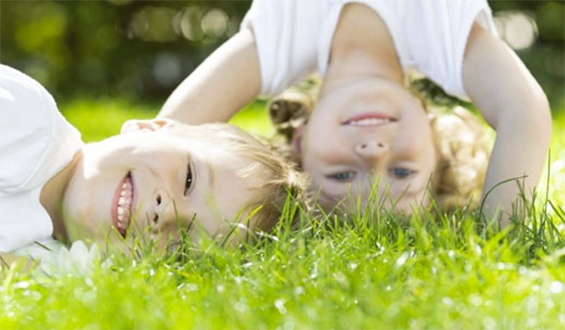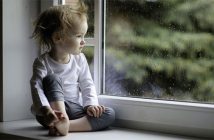
A study published found that it is possible that time outdoors can reduce childhood rates of myopia, or nearsightedness that causes difficulty seeing things at a distance.
Researchers in China found 12 schools willing to participate in the experiment. One-half of the schools assigned their first-graders an extra recess period every day of the school year while the other half did not. A total of 1,900 first-graders aged 6 and 7 were part of the study for three years, writes Maggie Fox of NBC News.
At the end of the experiment, almost 40% of the students who did not have an extra recess period developed myopia. Of the children who had the extra recess period, 30% developed myopia, but the researchers thought the effect would be much larger.
Dr. Mingguang He of the Zhongshan Ophthalmic Center in Guangzhou, who was head of the research team, thought that there would be at least the same results as in Taiwan where kids stayed outside for as much as 80 minutes a day and had a 50% reduction in myopia rates. Dr. He’s study, published in the Journal of the American Medical Association, gave children an extra 40 minutes a day outside.
“Our study achieved an absolute difference of 9.1 percent in the incidence rate of myopia, representing a 23 percent relative reduction in incident myopia after three years, which was less than the anticipated reduction,” they wrote.
“However, this is clinically important because small children who develop myopia early are most likely to progress to high myopia, which increases the risk of pathological myopia,” they added.
They also knew that parents had not encouraged their children to play outside more as the scientists had requested. They wondered if more time outdoors, the sunlight and extra activity might also have helped protect their vision. The researchers did not believe that exercise alone, or time away from computers and books alone, made the difference. In fact, in studies where kids were not assigned time outdoors but did exercise indoors, myopia rates were not affected.
It could be exposure to sunlight, focusing on objects at varying distances, exercise, or a combination of all those factors affects vision. Dr. Michael Repka of Johns Hopkins University School of Medicine stated that how long the effects of the experiment lasted would be an important piece of the puzzle.
In studies which have evaluated the treatment of myopia there has been a catch-up in the progression of myopia when the intervention was discontinued. Another team that found a formula for predicting myopia also discovered that children in first grade have a tendency to be slightly farsighted. Those kids who are not farsighted at this age tend to eventually become myopic.
Children are being diagnosed as nearsighted in dramatically increased numbers in recent years in some urban sectors of East and Southeast Asia. There is a rise in Europe, the Middle East and some other parts of the world also, according to Mary Elizabeth Dallas, reporting for US News and World Report.
The researchers say more long-term studies are needed to support their findings. Information about the type of additional outdoor activity and the standardizing of activity need to be added to future research. Repka noted that the outdoor activity is basically free and may very well have other health benefits.
“Given the popular appeal of increased outdoor activities to improve the health of school-aged children in general,” Repka added, “the potential benefit of slowing myopia development and progression by those same activities is difficult to ignore.”
Reuters quoted Dr. He’s statements concerning the scientific process of the experiment.
“There were some studies suggesting the protective effect of outdoor time in the development of myopia, but most of this evidence is from cross-sectional studies (survey) data that suggest ‘association’ instead of causality. Our study, as a randomized trial, is able to prove causality and also provide the high level of evidence to inform public policy.”
He added that the issue of potential skin and eye damage from UV rays must continue to be managed by standard UV protection practices.




